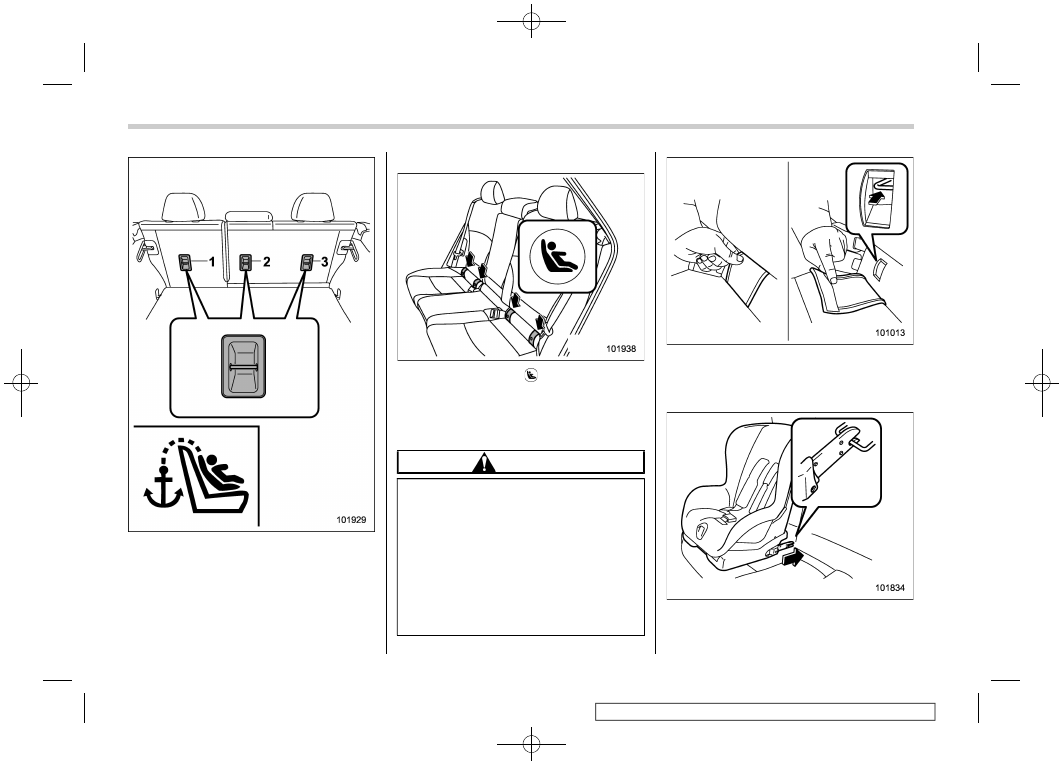Subaru Outback (2019 year). Instruction - part 5

(70,1)
北米Model "A2550BE-A" EDITED: 2018/ 5/ 9
Outback
1)
For left seat
2)
For center seat
3)
For right seat
The tether anchorages (upper an-
chorages) are provided for all the seating
positions (center and both window-side
ones) of the rear seat.
You will find marks “ ” at the rear seat
cushion. These marks indicate the posi-
tions of the lower anchorages (bars).
Each lower anchorage is located behind
the cover of seatback bottom.
CAUTION
When you install a child restraint
system, follow the manufacturer’s
instructions supplied with it. After
installing the child restraint system,
check to ensure that it is held
securely in position. If it is not held
tight and secure, the danger of your
child suffering personal injury in the
event of an accident may be in-
creased.
Peel off the anchorage cover from the
selected side of the rear seatback to
expose the anchorages (bars) to be used
for installation of the child restraint system.
1. While following the instructions sup-
plied by the child restraint system manu-
Seat, seatbelt and SRS airbags/Child restraint systems
1-38